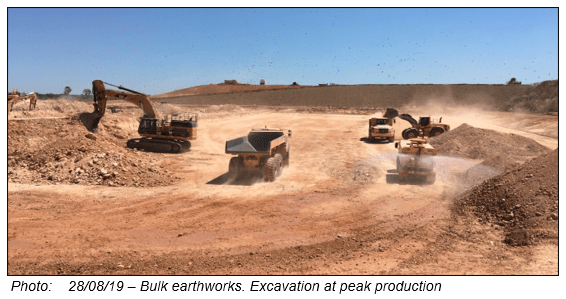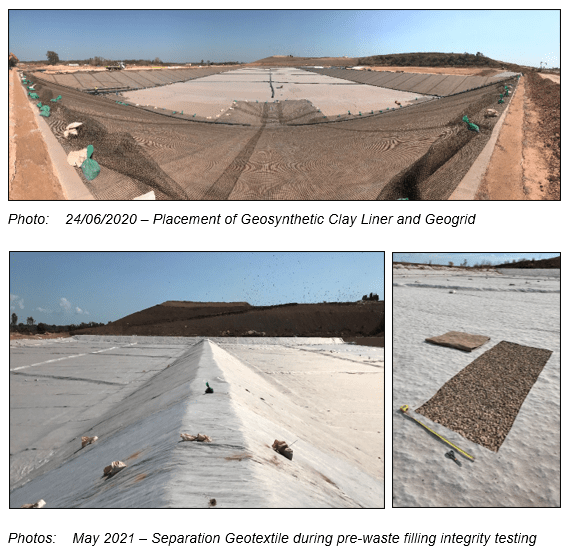Shoal Bay Waste Management Facility
Stage 6 Cells - Completed September 2020
City of Darwin has completed the construction of new Stage 6 Cells in September 2020 and recently commenced using the site.
The construction works spanned 14 months between the dry seasons of 2019-2020 and was delivered by local company DTA Contractors at a cost of $7.5M. The overall project cost including supervisory and auditing scopes was $8.55M.
The science and engineering methods involved in global waste management and landfilling are constantly evolving. The design of this project (by Golder Associates) is industry leading, incorporating world class materials and construction methodologies.
The final delivered product is comprised of specialised materials and layers including the Geomembrane (HDPE) Liner, Reinforced Geosynthetic Clay Liner, a leachate drainage system and the protective Geotextile layering.
Commencing 7 June 2021, Shoal Bay Waste Management Facility Operations Contractor Veolia will commence placement of waste in the Stage 6 Cells. Achievement of this milestone ensures that Cell 6b will be sufficiently filled ahead of significant wet season 2021/22. Consequently, the creation of leachate in the first year of active use of Stage 6 will be kept to a minimum, reducing the load of generated leachate on the site-wide leachate management system.
How much excavation was involved and to what depth?
Depth of the new cells varies from 2.5m deep at its shallowest point to 6m deep at its deepest. There was approximately 80,000 cubic meters of material excavated during construction and approximately 30,000 cubic meters of engineered fill imported back into the project for construction. All of the excavated material was recycled back into the construction of the project or otherwise used across the site for landfilling activities.
What is it lined with?
The new cell is lined with low permeability clay-rich material, engineered HDPE (plastic) Geomembrane liner, Reinforced Geosynthetic Clay Liner and finally a protective geotextile fabric.
What do the layers of lining do?
The combination of the layers allow for two functions to occur; leachate is collected and drained from the topside of the liner whilst the liner is simultaneously acting as an extremely low-permeability protective barrier between the waste and the underlying ground layers and surrounding environment.
Does it have leachate capture structures?
Yes. Leachate is filtered from the bottom of the cells through a network of aggregate and slotted pipes before being pumped into our greater leachate management system. Gas harvesting infrastructure has also been incorporated into the design and construction of the cell which eventually will allow for the capture and reuse of methane gas as a form of sustainable energy generation.


